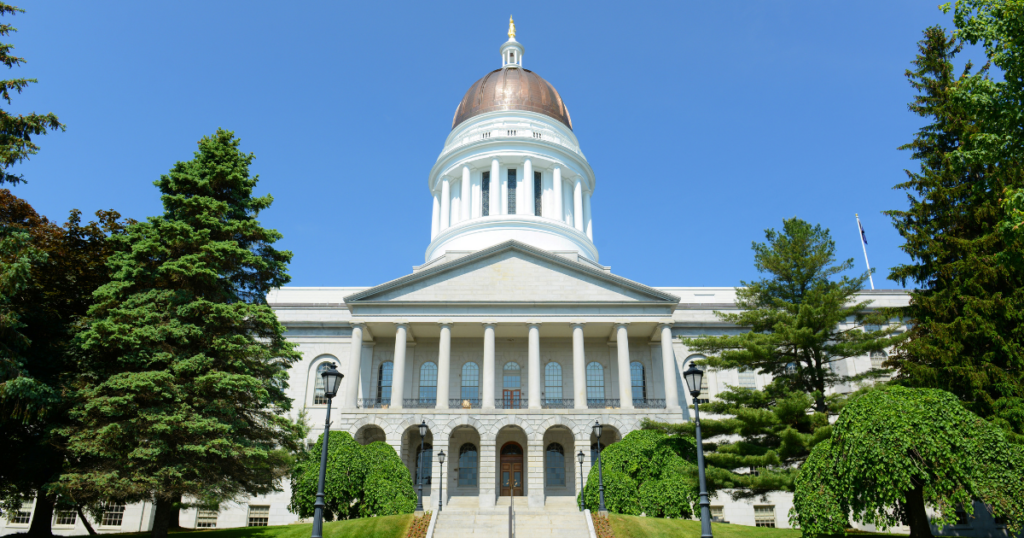Maine’s unexpected $152 million budget surplus signifies a pattern of overly cautious revenue forecasts that led to unnecessary cuts and regressive taxes, underscoring the need for more accurate projections and fair, progressive funding.
Overview
- The state ended the fiscal year with $152 million more than expected, continuing a long pattern where the revenue predictions are lower than what is actually collected
- Lawmakers and the governor relied on overly cautious projections to justify cutting essential programs and employing taxes that disproportionately ask more of people with low income, even though funds were ultimately available
- Instead of underinvesting during times of economic strength, policymakers should pursue sustainable funding by taxing wealthy Mainers and correcting the imbalance created by past tax cuts
Maine ends fiscal year 2025 with $152 million surplus
In August, the Maine Department of Administrative and Financial Services (DAFS) reported Maine finished its 2025 fiscal year with a budget surplus of $152.2 million, calling into question predictions of plateauing revenue and the Appropriations and Financial Affairs Committee’s (AFA) decision to underfund key needs in its recent biennial budget.
According to DAFS’ end-of-year report, the surplus included $117.6 million in revenues that exceeded the most recent estimates of the Revenue Forecasting Committee on May 1, plus $34.5 million from unspent money that had been allocated in previous budgets, plus some minor accounting adjustments. Following state law, most of the $152.2 million budget surplus was automatically dispersed to a number of state reserve funds, while $33.8 million was allocated to the state Highway Fund. Notably, the Highway Fund is already receiving $116 million in general fund money as a result of failing to fund roads adequately through the gas tax and bonding.
A surplus that undercuts claims of tight budgets
This year’s end-of-year surplus is particularly notable because just weeks earlier AFA crafted a budget which included a number of regressive taxes that ask more from people with low income while still underfunding key programs like health care, free community college, family planning, child care, and housing assistance. If the existence of the $152 million surplus had been known at the time, the committee could have met more of these needs without relying on less-than-ideal regressive revenue sources like the tobacco tax. The end-of-year surplus also comes after the state’s Revenue Forecasting Committee (RFC) had already revised its prediction for the amount of general fund revenue in fiscal year 2025 upward by $248 million in December and again by another $24 million in May. In the end, actual general fund revenue for fiscal year 2025 will be almost $390 million or 7% higher than was expected at the beginning of the fiscal year. Initially, the state had projected a slight downturn in revenues in 2025 compared to 2024 but instead saw robust year-over-year growth.
Why forecasts missed the mark
By its very nature, no revenue forecast is ever perfect. Nonetheless, the difference between the initial forecasts and the final revenue amounts for 2025 were unusually high. Some of the variance was due to unusual circumstances. For example, $85 million worth of income tax returns for 2023 were filed late due to the winter storms in 2023/24 and recorded in fiscal year 2025. Estate tax revenues were exceptionally large, due to the recent deaths of a small number of wealthy individuals.
Since 2005, the difference between the initial forecast of general fund revenue in a fiscal year and the actual amount of revenue brought in has averaged 1.9% (excluding fiscal years 2021-2023 in which the economy was unusually volatile due to the COVID-19 pandemic). The 2025 difference is much higher, at 7.3%. Likewise, the average difference between the revenue projected at the spring meeting of the forecasting committee and the end of the fiscal year is just 1.1%, while this year it was 2.1% — almost twice as large.
A pattern of underestimation
In general, Maine’s RFC performs well, with only a 1-2% average variance between projected and actual General Fund revenues — a small margin of error. However, those errors consistently lean in one direction: the RFC routinely underestimates available revenues. Aside from the 2008 financial crash, the committee has overpredicted revenue only during major recessions.
While ending the year with more money than expected is preferable to falling short, Maine’s persistent underestimates have already filled the Budget Stabilization Fund to its legal cap. Because that fund exists precisely to cushion shortfalls when forecasts miss the mark, the state now has a billion-dollar backstop. With that safeguard in place, what Maine most needs from forecasters is not caution but accuracy.
How forecasting impacts policy choices
Consistently underestimating general fund revenues makes the jobs of the legislature and the governor harder. This year, Governor Mills proposed a budget with substantial cuts to key programs combined with regressive tax increases to meet the forecast’s December predictions. It turns out most of those cuts and tax increases were unnecessary. Similarly, in 2024, the Governor cited “flattening revenues” as one reason to refuse to fund dozens of bills.
The path forward: sustainable, progressive revenue
The best way lawmakers can make their jobs easier is not by relying on the steady rise in general fund revenues projected by RFC forecasts, but by creating new sources of progressive revenue — ensuring programs are sustainably funded by taxing the wealthiest Mainers who can contribute the most. When lawmakers return in January, they will have several bills to take up which will do just that.
This is especially true in the face of the significant economic headwinds President Trump is creating. The imposition of huge tariffs, mass deportations, and diplomatic feuds with Maine’s neighbor, Canada, all threaten state tax receipts for 2026 and beyond. What’s more, the passage of the President’s reconciliation megabill pushes new budget costs onto states like Maine by significantly cutting the social safety net.
While the unexpected 2025 surplus represents a missed opportunity for Maine’s lawmakers to make investments while the economy is strong, it should not be taken for granted that these higher revenues will continue. Instead, lawmakers should focus on restoring the revenue lost from LePage-era tax cuts by taxing the wealthy to sustain programs that keep Mainers healthy, housed, and productive.


